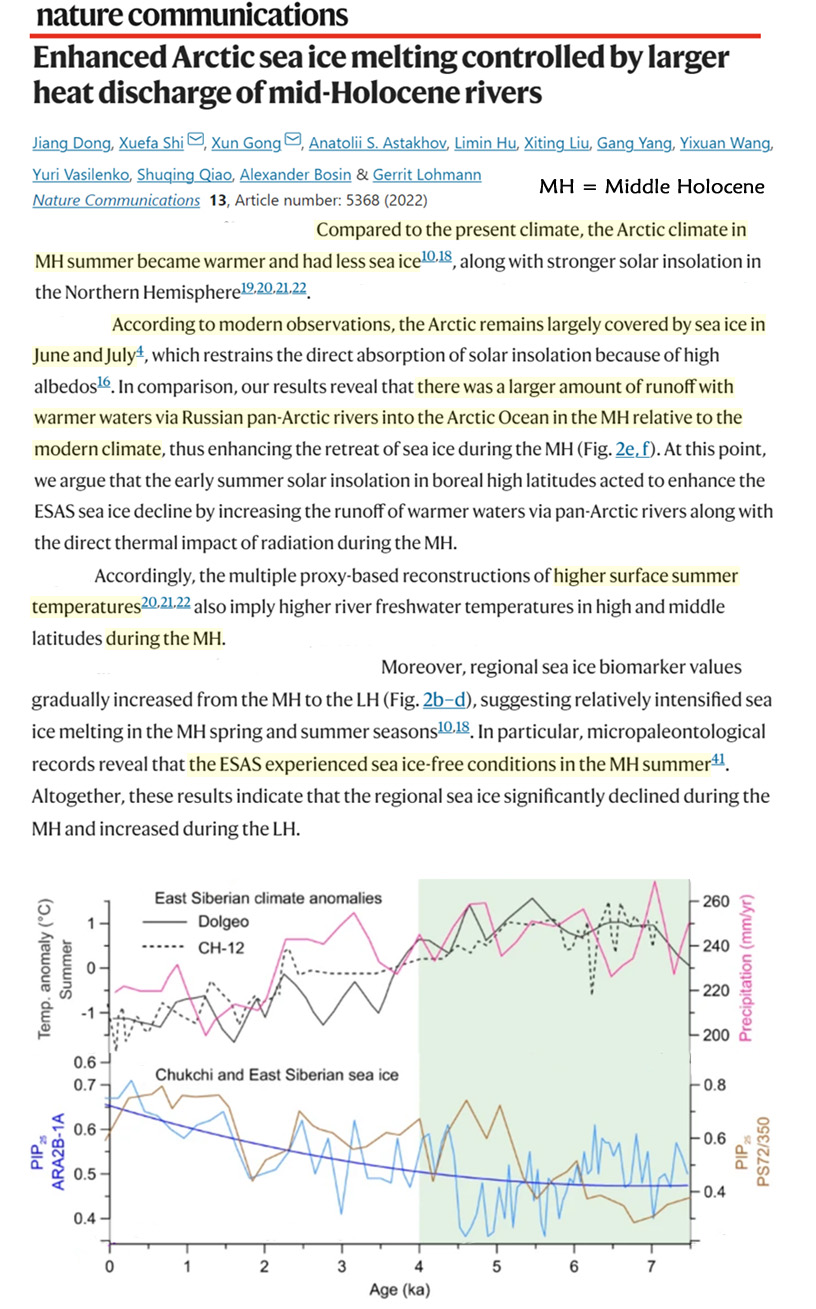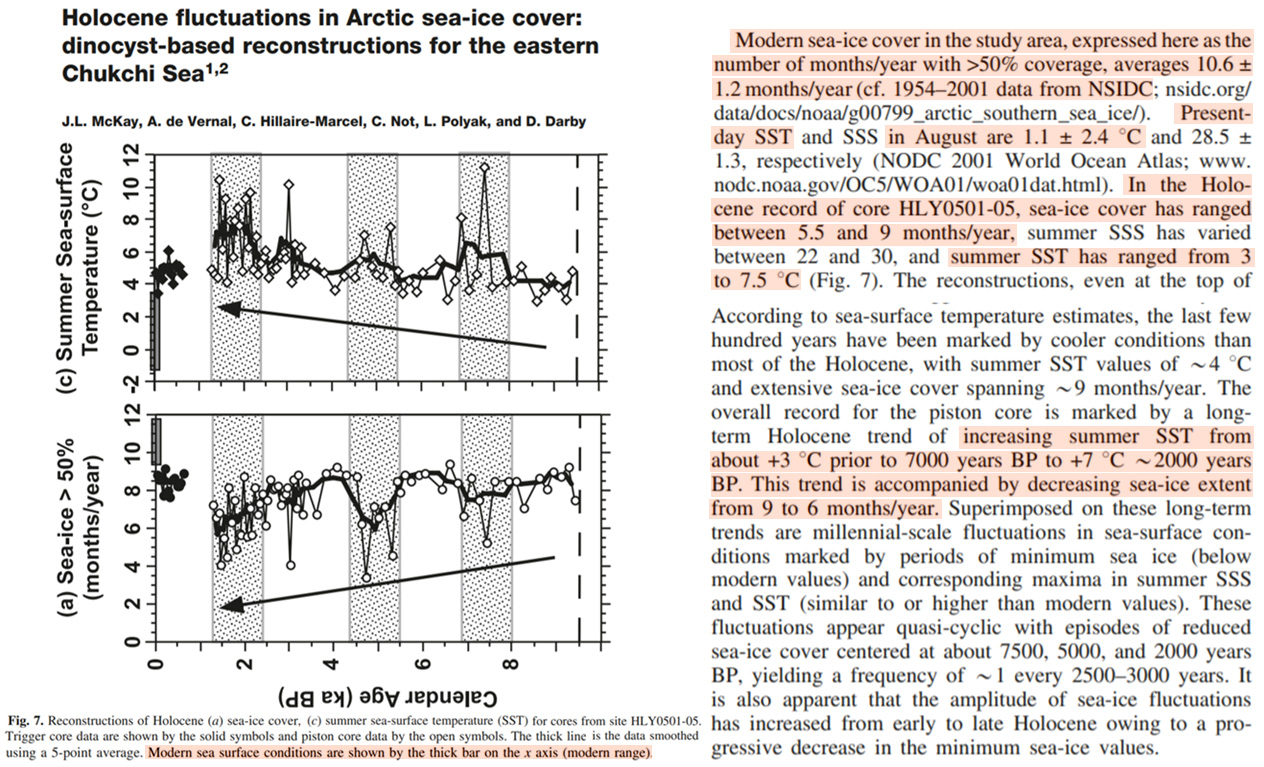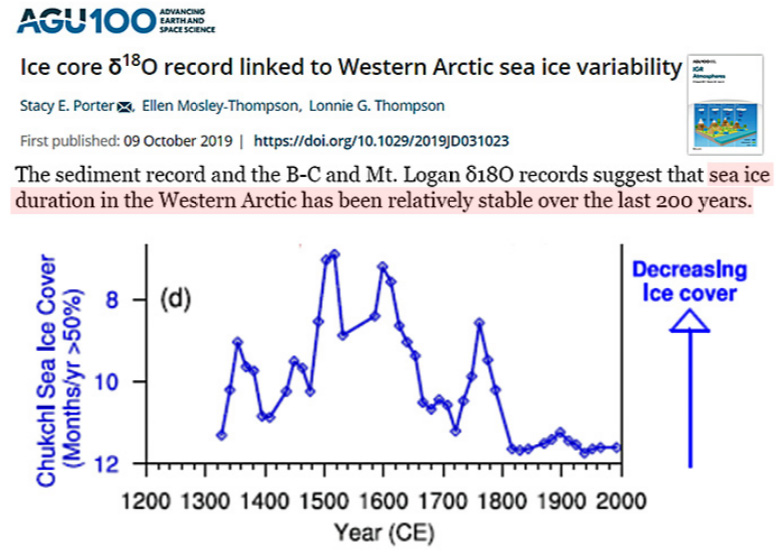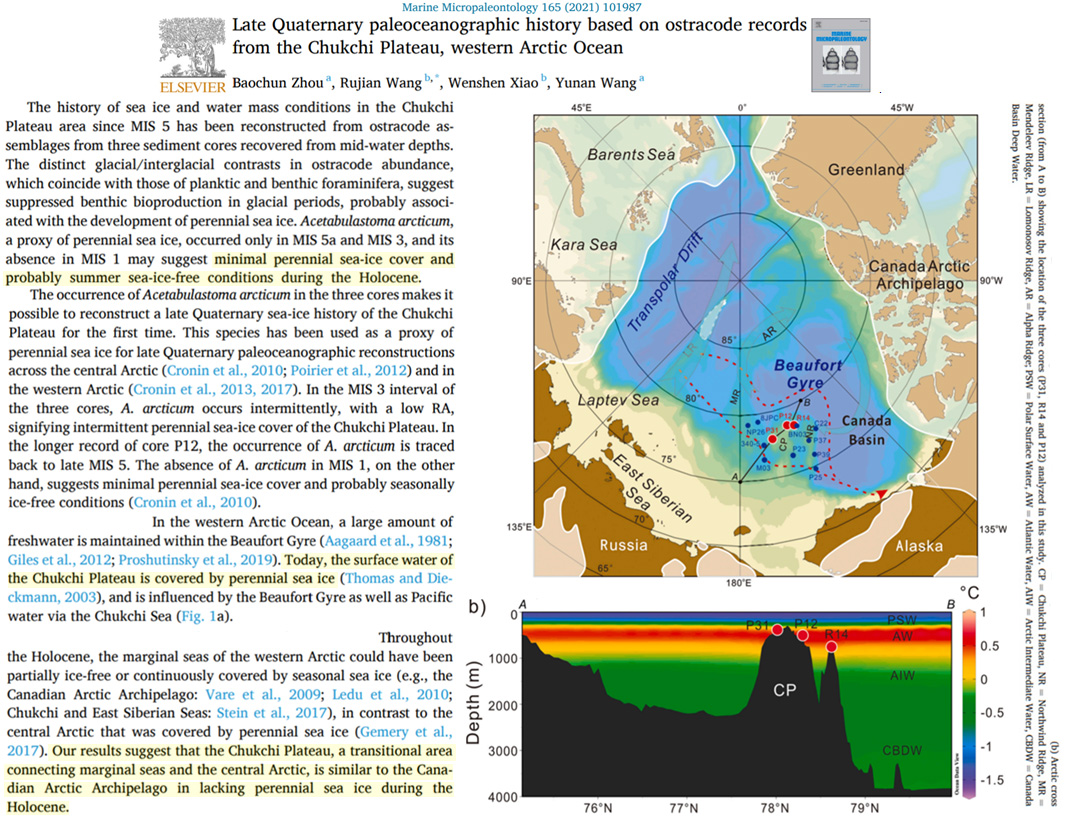“Compared to the present climate, the Arctic climate in MH [Mid-Holocene] summer became warmer and had less sea ice” (Dong et al., 2022).
While the modern Arctic “remains largely covered by sea ice in June and July,” the higher summer sea surface temperatures (SSTs) from about 3,000 to 7,000 years ago meant the East Siberian Sea had “sea-ice free conditions throughout the MH summer.”

Image Source: Dong et al., 2022
Other studies assessing the paleoclimate and sea ice cover trends for the Chukchi Sea region provide more detailed quantification.
McKay et al. (2008) reported the modern Arctic sea ice coverage lasts 10.6 months per year, and present-day summer SSTs average 1.1°C.
But throughout most of the last 9,000 years the Chukchi SSTs ranged from 3 to 7.5°C (2 to 6.5°C warmer than present), and sea ice coverage lasted 5.5 to 9 months per year, or 1.5 to 5 fewer months than modern.

Image Source: McKay et al, 2008
Porter et al. (2019) also conclude modern Chukchi Sea summer sea ice endures for about 11 to 11.5 months per year, a duration that has remained stable for the last 200 years. In contrast, during the 1500s, 1600s, and 1700s sea ice coverage lasted only 7 to 9 months per year.

Image Source: Porter et al., 2019
Finally, Zhou et al. (2021) indicate that while the surface water of the Chukchi Plateau is “covered by perennial sea ice” today, this region had “probably summer sea-ice-free conditions during the Holocene.”






It’s not surprising that the Arctic had less summer sea ice during the Mid-Holocene (5.5 – 8 Ky ago), because this was the time of the Holocene Climatic Optimum, a period noticeably warmer than the present. However, I doubt that it was the heat transport by pan-Arctic rivers, which was responsible for a decrease of the summer Arctic sea ice during Mid-Holocene.
Our hypothesis is that the Holocene Climatic Optimum was caused by a 12-15% higher surface atmospheric pressure than today, which created a smaller Equator-to-Pole temperature gradient and a warmer Arctic region compared to present. Watch this video for details:
https://www.youtube.com/watch?v=DpUkPPtkPVc
[…] want to and won’t just melt away like butter in the spring sun, especially since the existing data prove that the Arctic ice sheet has been relatively stable for around 200 years now. And not only […]
[…] es will und wird nicht einfach so wegschmelzen wie die Butter in der Frühlingssonne, zumal die vorhandenen Daten beweisen, dass die arktische Eisdecke seit nunmehr rund 200 Jahren relativ stabil ist. Und nicht […]
[…] es will und wird nicht einfach so wegschmelzen wie die Butter in der Frühlingssonne, zumal die vorhandenen Daten beweisen, dass die arktische Eisdecke seit nunmehr rund 200 Jahren relativ stabil ist. Und nicht […]
[…] on se ne želi i neće se jednostavno otopiti kao maslac na proljetnom suncu, pogotovo jer dostupni podaci pokazuju da je arktički ledeni pokrivač relativno stabilan već oko 200 godina. I ne samo […]
[…] From NoTricksZone […]
[…] will und wird nicht einfach so wegschmelzen wie die Butter in der Frühlingssonne, zumal die vorhandenen Daten beweisen, dass die arktische Eisdecke seit nunmehr rund 200 Jahren relativ stabil ist. Und […]
[…] es will und wird nicht einfach so wegschmelzen wie die Butter in der Frühlingssonne, zumal die vorhandenen Daten beweisen, dass die arktische Eisdecke seit nunmehr rund 200 Jahren relativ stabil ist. Und nicht […]
[…] overdreven. Want het wil en zal niet gewoon wegsmelten als boter in de voorjaarszon, temeer daar de data die voorhanden zijn, bewijzen dat het ijsdek in het noordpoolgebied nu al meer dan 200 jaar relatief stabiel is. En dat […]
[…] fanatiků a svědků Gretiných ohledně arktického ledu se ukazuje jako naprosto přehnané. Dostupná data dokazují, že arktická ledová pokrývka je již asi 200 let relativně stabilní. A nejen to: v […]